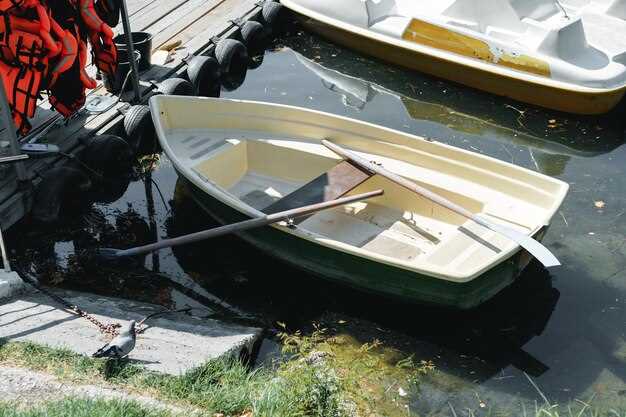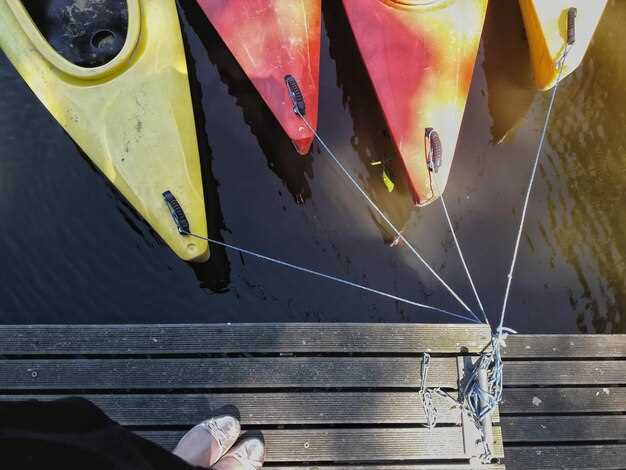Rinse with fresh water after every sailing session, dry thoroughly, and keep the craft under a breathable cover. Salt, mud, and UV exposure accelerate material fatigue. This quick routine is the first line of defense against corrosion and seam failure.
Inspect the hull and transom for cracks or delamination below the waterline, and compare findings with the specs provided by the manufacturer. When storing in a facility with limited humidity, use a dry, ventilated corner rather than a damp spot; custom racks that keep the unit off the concrete will cut mold risk by about two-thirds over winter. Seasonal change in humidity makes ventilation even more valuable.
For inflatable sections, check valve seals weekly; when you inflate, verify the head pressure equals the unit’s recommended PSI per specs to avoid overinflation and leaks around the tail seam. Keeping proper pressure prevents punctures and improves handling on waters.
Use a helper when moving on ramps to the water or onto a trailer; keep the bow toward the flow and the stern ball clear of obstacles. Sailors report that steady grip on the tail fittings reduces slip risk. heres a practical check: avoid lifting by grab handles alone.
On trailer, attach safety straps to the frame and use a ball hitch with a rated load above the craft’s weight; test tongue weight at roughly 10% of total mass prior to highway moves. Price ranges for basic trailer kits vary, from around $200 to $800 depending on region and features.
Invest in a custom cover designed for your model; these reduce UV damage and keep interior dry. If possible, lift the unit onto supports that keep it above damp floors and maintain airflow below the floor. Inspect joints, hoses, and inflation valves; replacing worn hoses typically costs well below $20 per part and prevents costly leaks later.
When not in use, move the craft into a dry shed or elevating rack; a simple facility with elevated platforms and ramps makes move and maintenance tasks easier for a motorized setup. For winter weeks, store with valves closed and the air vent open to prevent condensation, and keep it off concrete if possible.
heres a concise sequence sailors follow: inspect, rinse, dry, deflate, store; when choosing accessories, check specs und price before buying. If a particular piece is called for by the manual, replace right away to avoid lost performance later.
Dinghy Maintenance and Storage Tips: Prolong Your Boat’s Life; Yacht Clubs Marinas and Municipal Boat Facilities
Rinse inflatables with fresh water after each trip; wash with mild soap; carefully dry completely; keep above ground on a tall rack in a shaded yard. During night hours, keep on the rack to avoid moisture.
Marinas, yacht clubs, municipal facilities provide open washing bays in different areas; power outlets; hoses; use these for large or stubborn grime. Researching local timetables helps; think through fall sale periods; annual rates may drop; still keep above waterline in the yard.
Inspect fittings; look for damage; replace worn grommets; clean with mild soap; avoid abrasive brushes; coraline or algae growth signals risk; addressing issues early prevents expensive repairs; damage risk rises while neglected; this geared approach yields an excellent, great investment in longevity.
Keeping gear in a sheltered area reduces exposure to coraline; choose a yard or rack tall enough to clear ground; for dinghys, use a sturdy cover when open; check weekly before night checks; detach sails, stow them safely.
If space near marinas or municipal yards is limited, consider third-party keeping services, or other options near these locations; this might lower costs, rarely requiring replacement parts; above all, treat the hull as an investment; washing, upkeep extend its life.
Practical upkeep and sheltering practices for a small craft

Park dinghys safely on flat, level cradles near the dock after every outing; this minimizes hull strain, thereby reducing water ingress; it’s a simple safeguard to improve durability.
Disconnect batteries during rest; shield terminals with a nonconductive cover to stop electrolysis that affects hardware. Shelter the craft under cover with ventilation; choose a location with low humidity; both steps reduce corrosion, thereby extending durability. Inspect cables; clamps; replace worn hardware with corrosion-resistant components; keep a specific set of screws; nuts; fasteners in a compact case for quick repair. This approach is easier for first-timers; it yields consistent results.
Apply a specific varnish finish to any wooden trim or seats; this form coats against salt spray and UV exposure. Let coatings cure in a dry, draft-free location; recoat on a simple, twice-year schedule for minimal upkeep; avoid applying during night hours when dew forms; thereby preserving color and resistance to cracking. This approach, proven by experience, yields durable surfaces.
Keep gear storage neat; attach spare parts to the carriage or cradles, not loose in the hull. A routine starts with a quick inventory check; a simple kit of tools, spare fasteners, a small waterproof case for batteries; store in a midship locker near a convenient location for quick access. This setup proves convenient, raising readiness without clutter; a quick call if help is needed speeds the process.
During a sale, upgrade to higher-grade hardware; this improves durability, reduces corrosion, looks cleaner soon after installation. In our opinion, such upgrades align with longer-term reliability goals for dinghys kept afloat in salt spray.
Quick-start seasonal inspection checklist
Recommendation: Charge batteries to full; test integrated electrical unit by turning the key until the engine starts; if couldnt start, swap to backup batteries located in the locker, then proceed with next checks.
Electrical quick-check: remove cover from battery box; wipe terminals with dry rag; apply dielectric grease; ensure cables secured; terminals free of corrosion; inspect for loose connections; store spare fuses at the location used by sailors for quick access.
Deterrent plan: keep cockpit gear locked; install a sturdy lock box near location; place a nautical sticker stating restricted access; this deterrent which reduces loss risk; sailors, family members, insurance reviewers could review procedure; this keeps complaints low.
Hull quick-clean: inspect tubes, bilge area, thru-hulls for coraline buildup; coraline reduces flow; easiest way is to keep tubes clear during return to dock; rinse, dry, inspect seams.
Engine readiness: check starter operation; connect a portable jump unit if batteries are depleted; engine still starts after warm-up; verify location of starter relay; test until smooth rotation; note last time it ran without issues.
Records update: verify insurance coverage dates; log last service; note needs; capture any complaints; keep a copy in locked location; carry a spare for quick reference by sailors, family; sailors arent experts, another quick check reduces risk.
Safety gear: inspect PFDs, throwables, signaling devices, extinguisher; verify expiry dates; replace worn items; carry spare whistle; keep kit near helm; family members know quick access route; a small totem tag on the locker lid reminds crew to perform checks.
Operational readiness: run a quick cycle with bilge pump; test emergency stop; confirm anchor rode location; verify trailer wheels inflated; secure hoses; soon after launch, keep the unit in its rightful location; complete remaining checks prior to departure.
Clean, protect, and preserve hull surfaces by material

Apply a polymer gel coat on fiberglass hulls; follow with a ceramic sealant; this combination yields larger protection against UV exposure, salt corrosion, algae buildup; long seasons require return checks; unattended cover with windbreak helps cruisers who rent moorings; this approach gives owners a major edge in upkeep.
- Fiberglass hulls
Cleaning protocol: marine soap; soft sponge; rinse; dry. Scale removal: non-abrasive cleaner; wax after drying; sealant recoat after every few washes. Inspection: micro-cracking visible; patch with color-matched resin; major idea: this approach uses ceramic topcoat with UV resistance. Seasonal check cycle; repeat inspection again each season. For trailered units, park behind a chock; cover with breathable material; watch for algae reoccurrence after seasons; coconut-based cleaner can reduce grime; yields easier return for recoat; small scratches may be filled with gel patch; behind fittings examine for moisture ingress.
- Aluminum hulls
Electrolysis risk exists; remedy: zinc anodes; inspect units each season; replace when mass loss threshold reached. Mounting requires insulating bushings; cleaning uses mild soap; rinse; dry; avoid chlorinated cleaners; protective layer: epoxy primer; topcoat: wax; ceramic sealant adds deterrent against salt; trailered vessels require anode check prior to launch; areas where fittings enter water require inspection; coconut-derived polish maintains gloss on exposed margins; after use, dry hull; store behind a chock; major benefit for cruisers renting slips; return on care appears in resale value; going forward, maintain a simple care rhythm.
- Wood hulls
Wood surfaces require varnish or epoxy barrier; cleaning uses warm water; microfiber cloth; avoid soaking; inspections at major seasons; recoat cycle; chocks and mounting hardware must be checked; coconut oil used as light conditioner on bare wood; store indoors or off ground; keep dry; final finish yields longer service life; timber care called timber care reduces risk; use a breathable cover for protection; legal compliance on timber use remains simple; going forward, maintain regular varnish checks; scale almost eliminated with proper barrier.
Valve care, patching, and seam maintenance for inflatables
Begin with valve inspection after each trip; check core, stem, cap for corrosion or cracks; if a flaw appears, replace immediately. Clean surfaces with fresh water; dry thoroughly; apply silicone grease if approved by the manufacturer. This routine increases durability by preventing slow leaks that become larger over time, reducing the risk of sudden failure such as break. Valve caps provide support to prevent depressurization.
Patching rule of thumb: keep a vinyl patch kit in a watertight bag; select patches at least 2 in larger than the rip, with rounded corners to reduce stress; clean the damaged area with isopropyl alcohol; roughen surface lightly; let surface dry clear. Apply adhesive to surface; place patch; press from center outward to attach edges. Cure time: 12–24 hours in shade; higher reliability achieved by avoiding direct sun during cure. If tubing is connected, detach section to patch away from tube; purchase a patch kit that includes multiple patches; picking the right parts matters.
Seam maintenance: inspect seams along the length for bubbles, cracks, loose threads. If a seam shows lift, apply seam sealer designed for vinyl. Follow instructions; cure time 4–6 hours. Common damage comes from sun exposure; inspect angle where seam meets tube; ensure patch alignment clear; smooth along surface to remove air pockets. This preserves last performance and reduces damage risk.
During transport, keep inflated sections secured away from sharp objects; if a vessel uses a davit, store loose items in a bag out of lift path. On waterfront docks, keep kit in a dry stand near the cleat; avoid heat that can warp tubing or damage fabric. Stored components reside in a dedicated pouch; retrieve quickly when repairs become necessary. For road trips, a compact kit travels in a tube bag or stand mounted container; this keeps tubing, sealant, patches intact. Keeping this setup increases durability; it also reduces downtime during rentals.
william advises: an ideal setup includes a tube of adhesive; a purchase patch; a spare patch; keep this in a waterproof bag during rentals; selecting the right parts improves durability. The average user should inspect patches monthly; for multiple road trips, keep a backup kit ready. picking the right patch color reduces visible damage; your patch kit should include more than one patch to address varied repair needs; anything that helps to retrieve from a puncture increases the lifespan of the tube.
Drying, ventilation, and weatherproof covers for safe storage
Recommendation: after use, dry dinghies surface until moisture disappears; mount a weatherproof cover with integrated vents; choose reinforced unit with coraline fabric for long-term protection; position on a stand or cradles to promote airflow. Whats good here: good setup reduces mildew risk; extends years of service; keeps property value intact.
Operational tips: Elevate via davit, mounting brackets, or cradles; keep dinghies off a slip to permit air flow; attach cover to a reinforced frame; pick a fabric color like coraline to resist UV; maintain access to boarding points for routine checks.
| Step | Action | Anmerkungen |
|---|---|---|
| Drying | Dry surface to moisture-free state | Usually 12–24 hours; ensure stand or cradles are level |
| Ventilation | Incorporate vents in cover; avoid airtight envelopes | Keep small openings near cleats; address crevices |
| Mounting | Use davit or mounting brackets; ensure frame is reinforced | Access remains clean; height clears property |
| Security | Lockable cover; monitor mooring area | Theft risk reduced; dock area should be locked |
| Inspection | Regular checks; remove grime; check coraline growth | Usually monthly; involve team |
Context: value shows in years of reliable use; damp conditions trigger rust on cleats, slips, cradles. The setup preserves boarding access, mooring readiness, property protection. whats more, a compact design suits smaller dinghies; a davit system supports larger units. we’ve observed this approach extends years of use; theft risk is reduced. magazine reports from teams in busy marinas confirm similar gains, usually with reinforced mounting, corrosion resistance; easy access for boarding; routines become simpler.

 Dinghy Maintenance and Storage Tips – Essential Guide to Prolong Your Boat’s Life">
Dinghy Maintenance and Storage Tips – Essential Guide to Prolong Your Boat’s Life">
